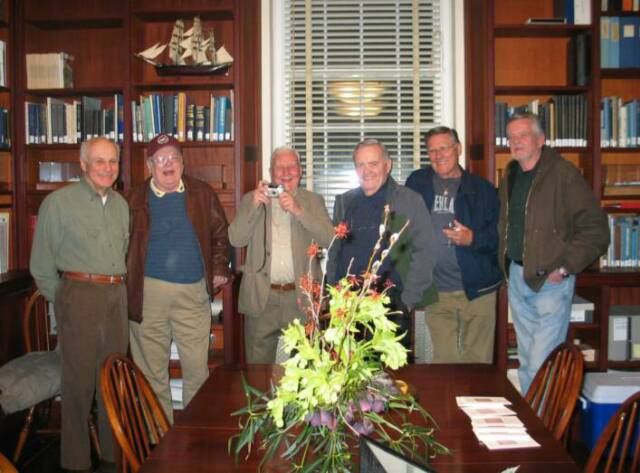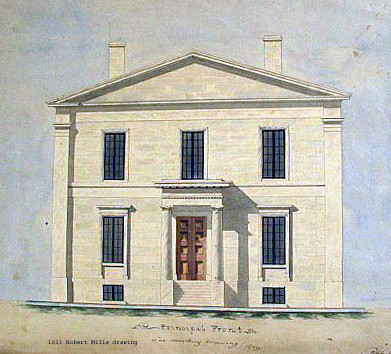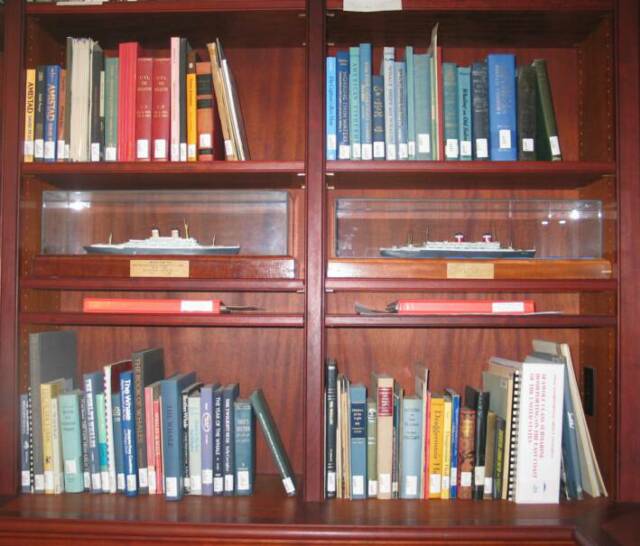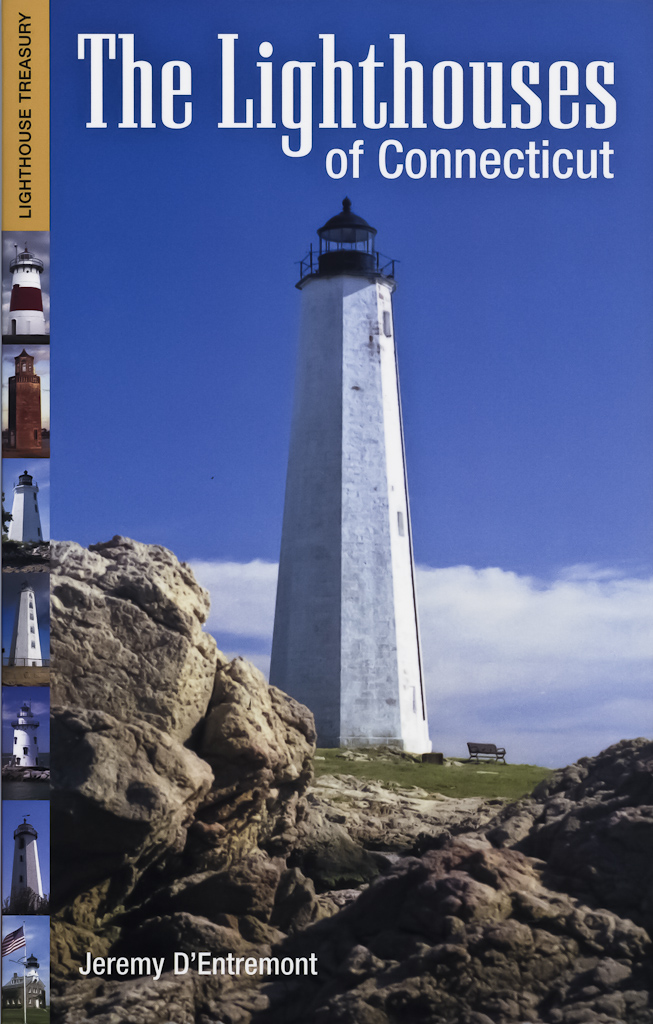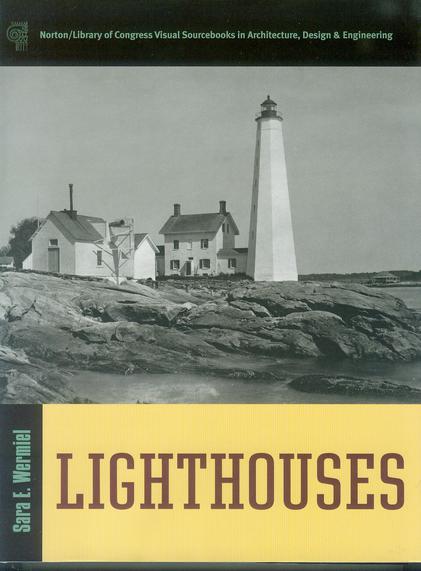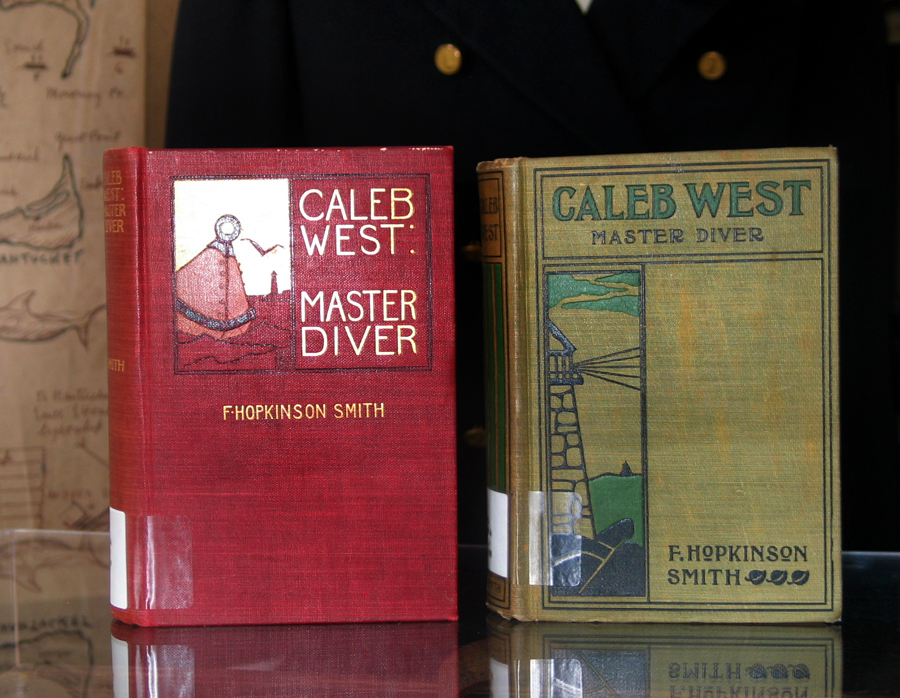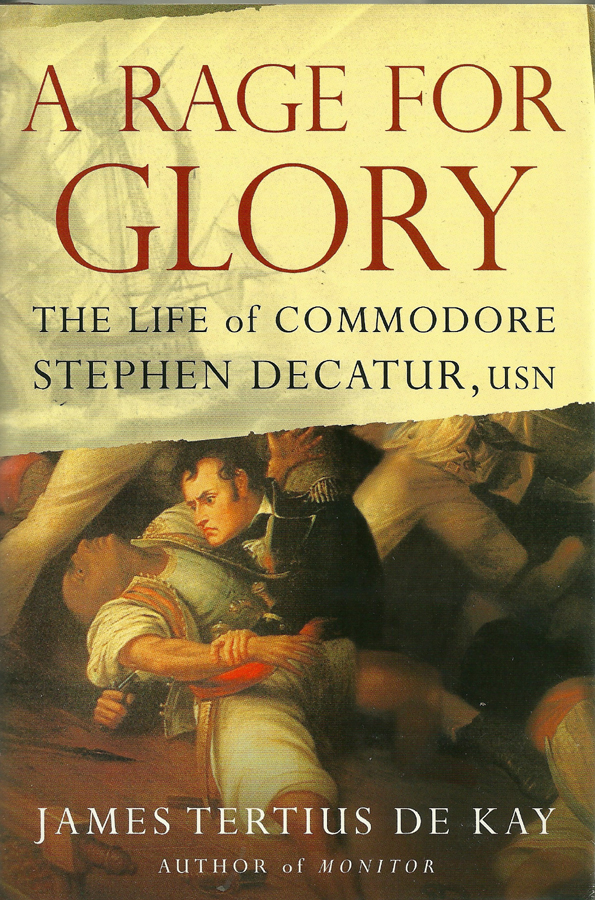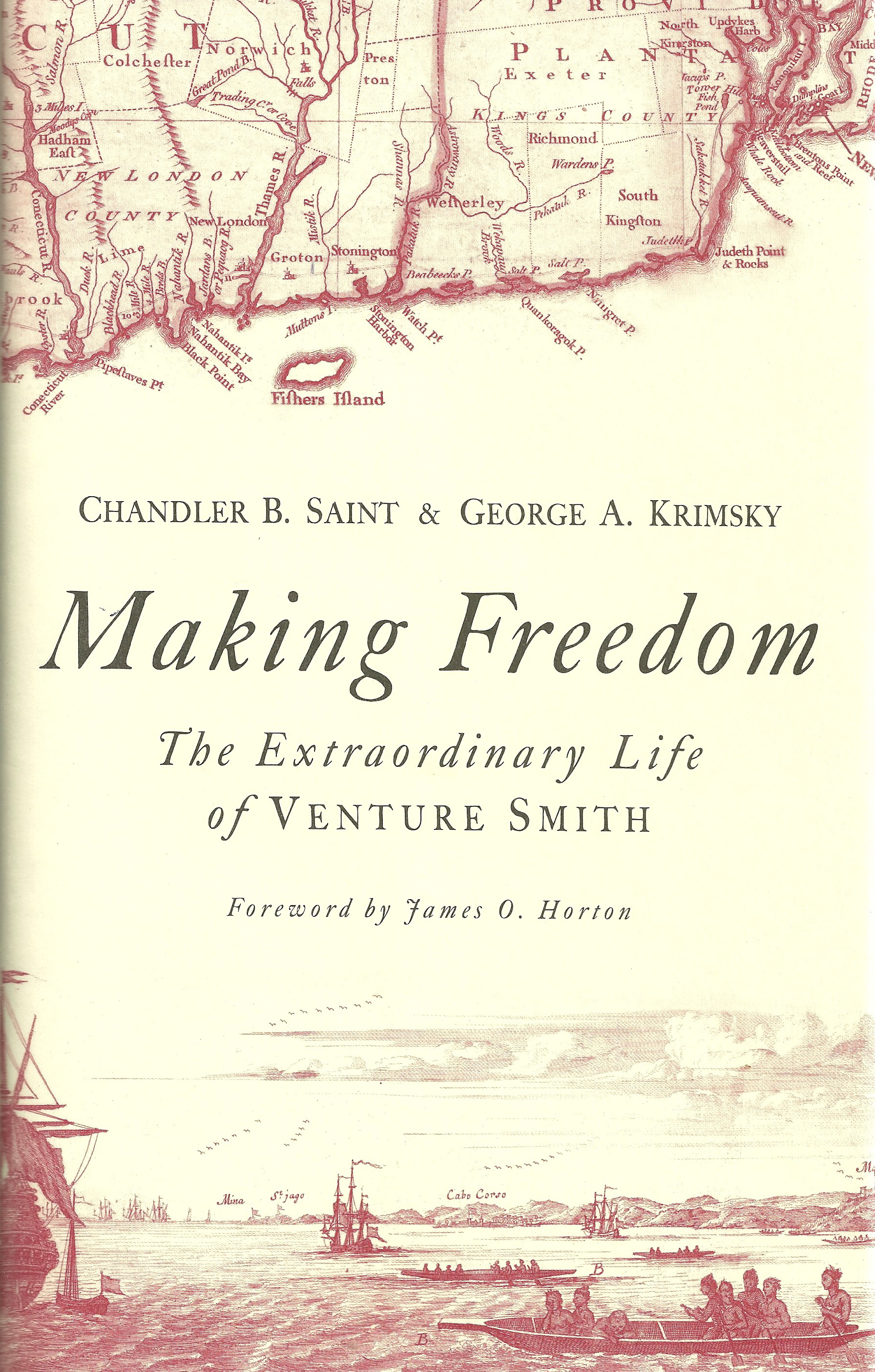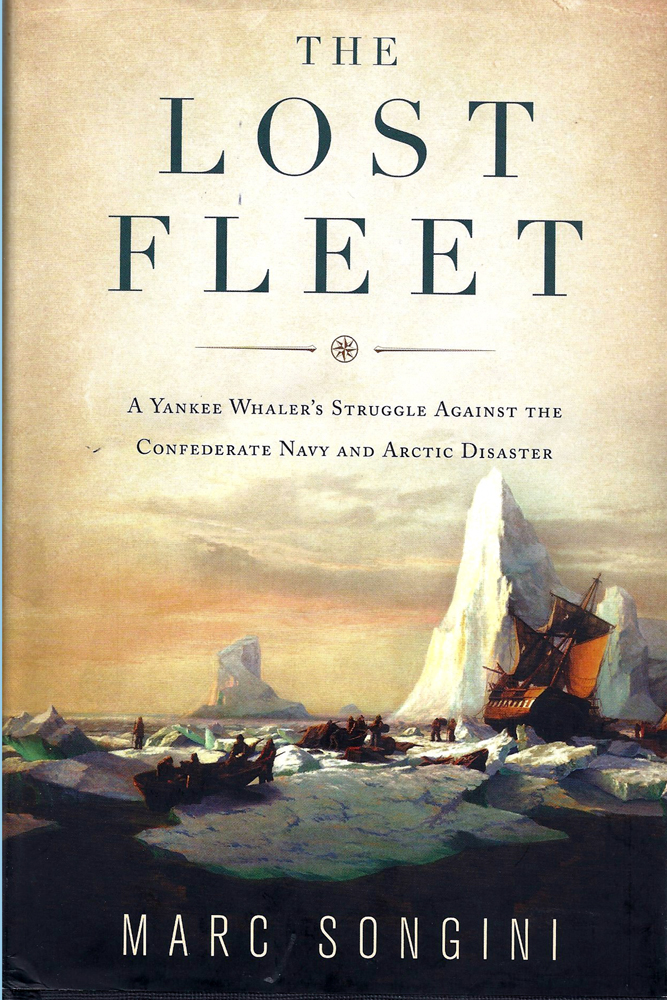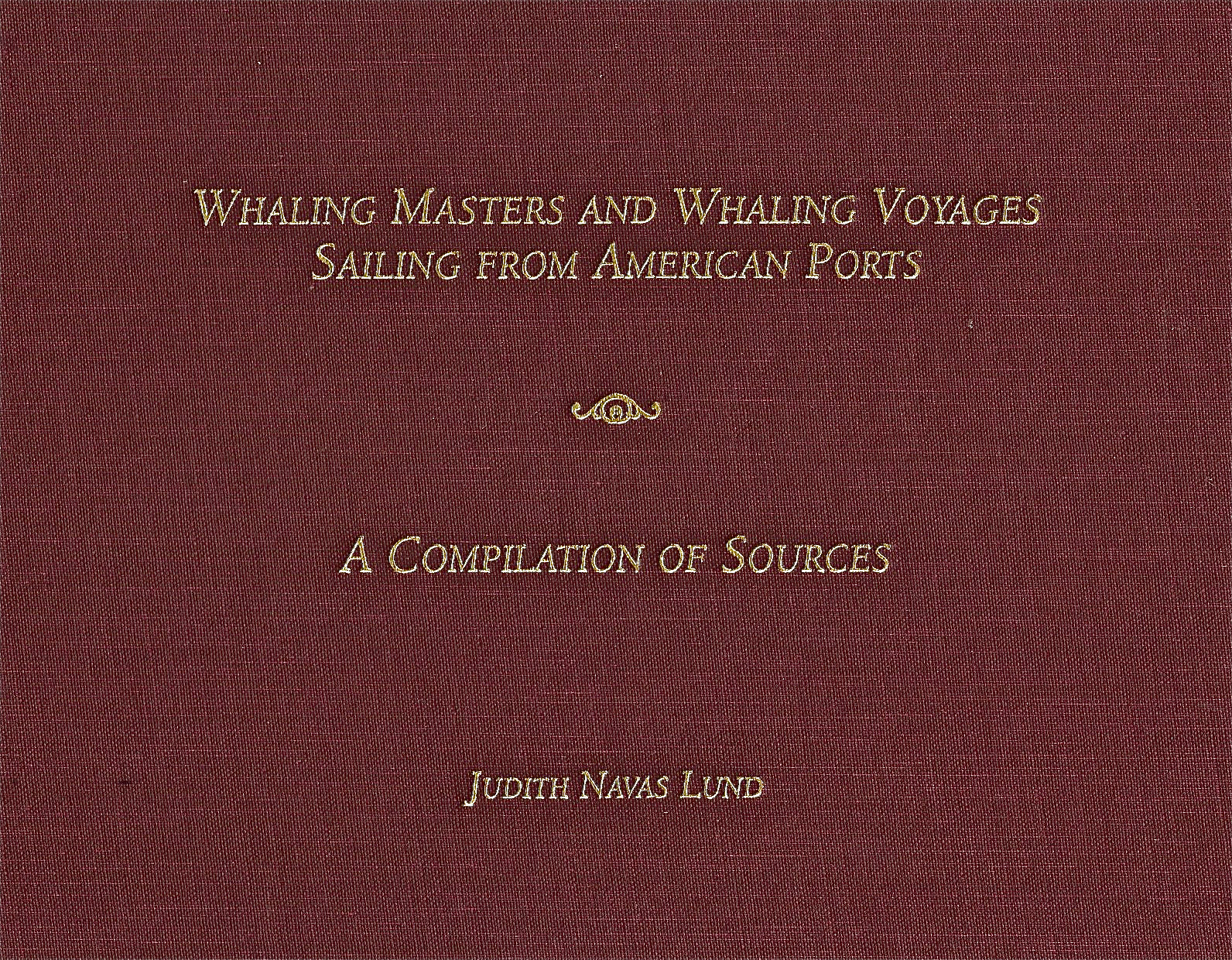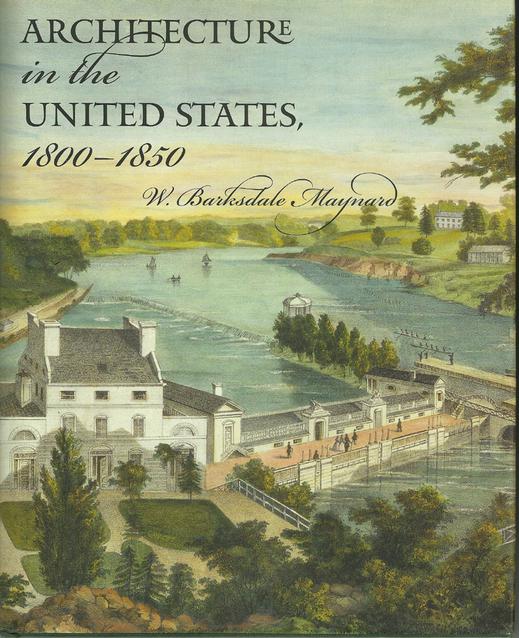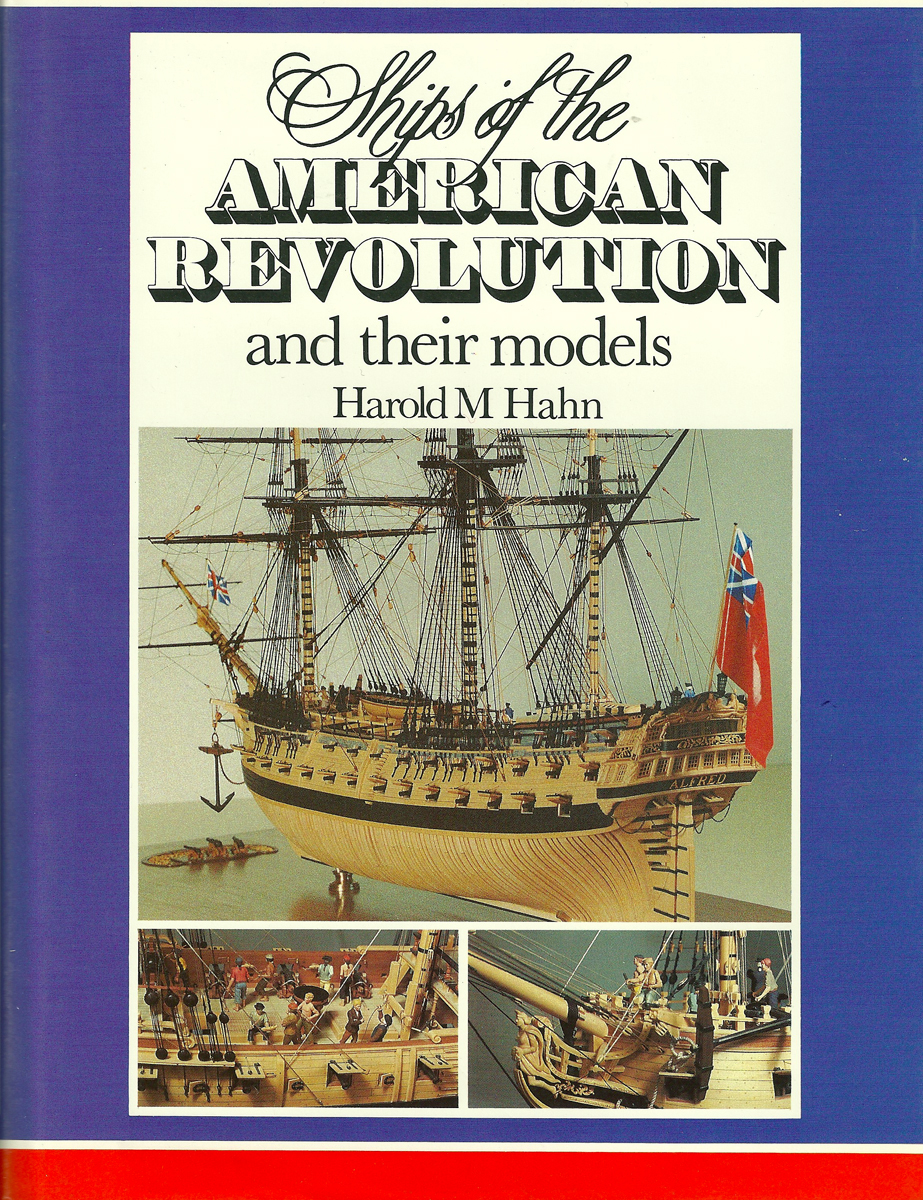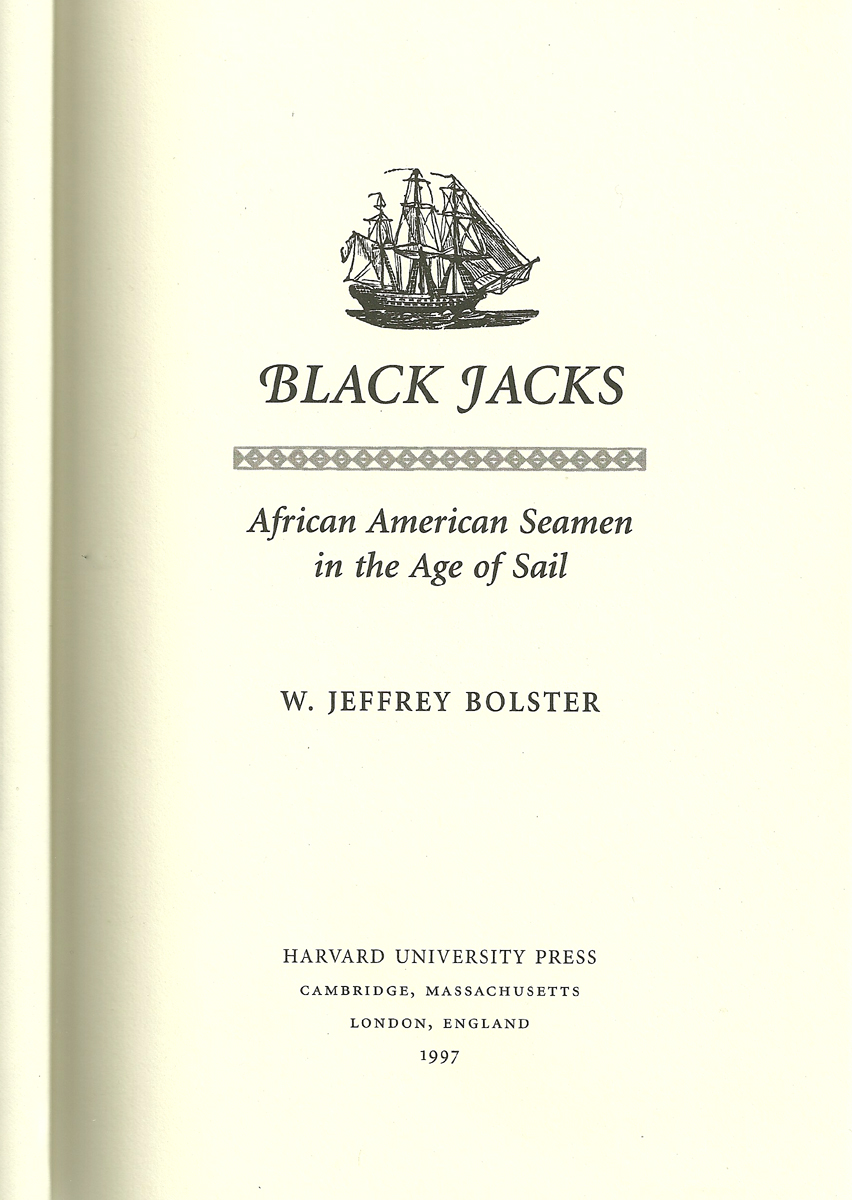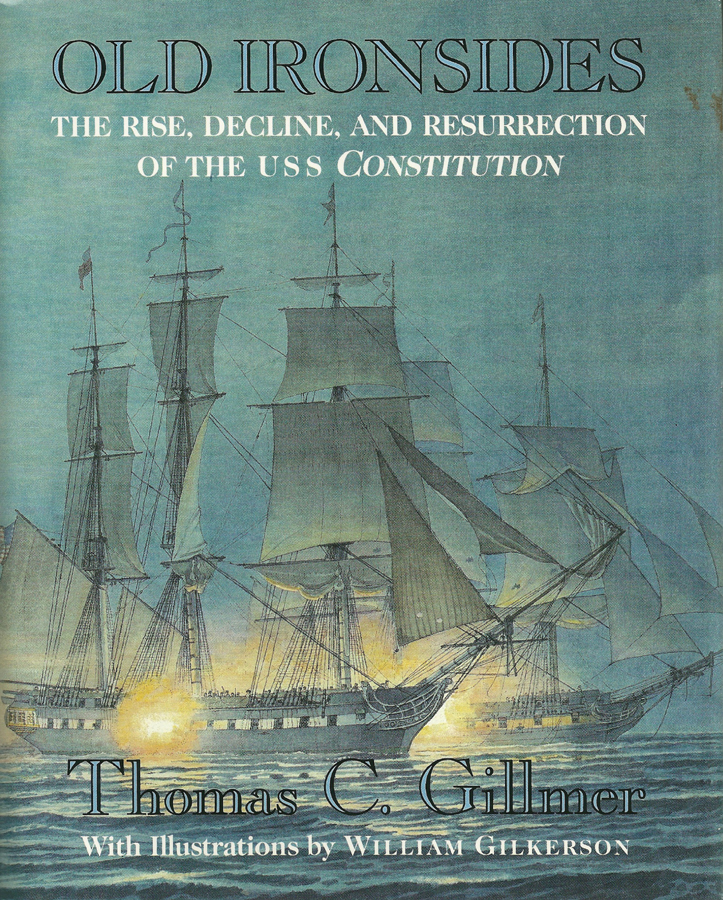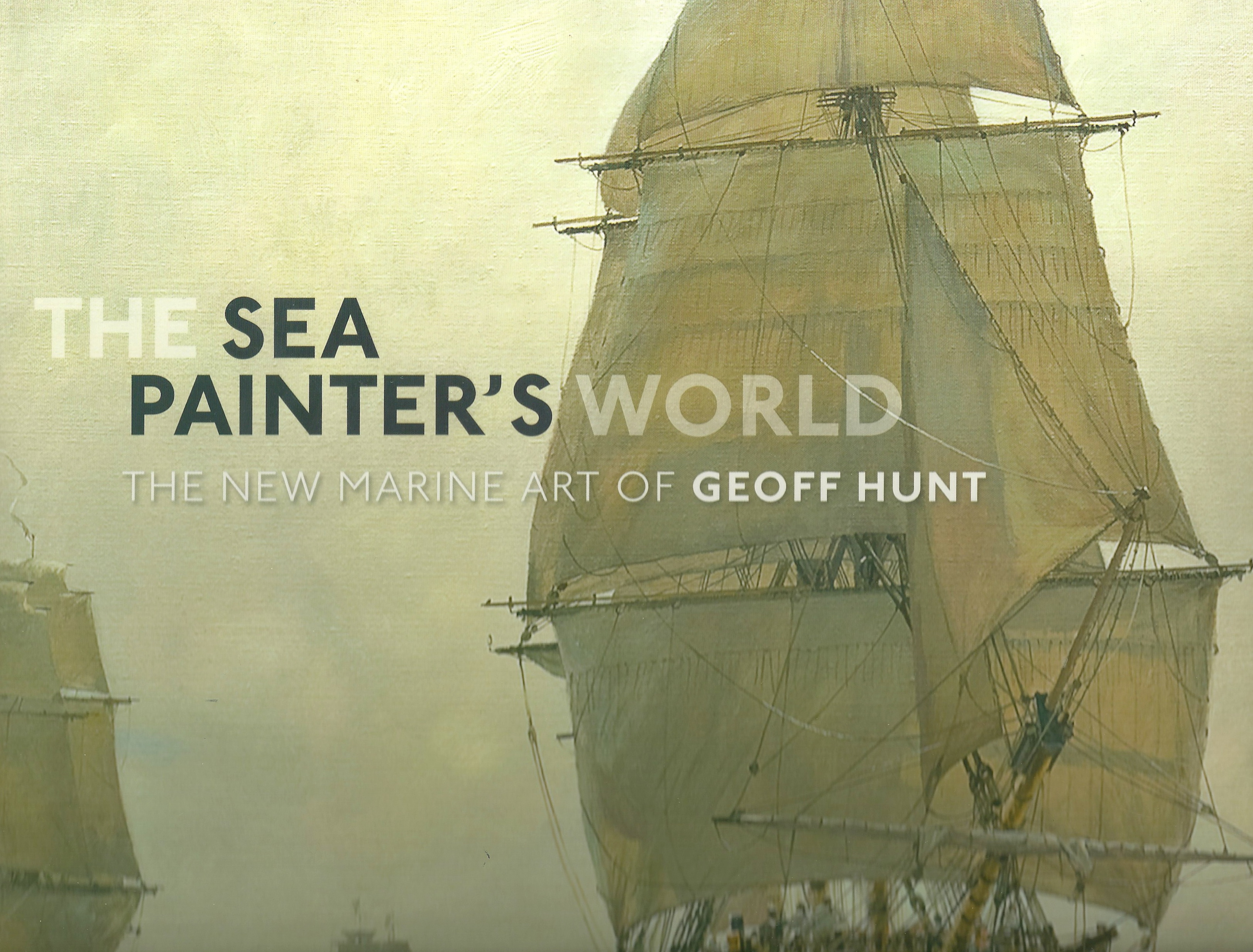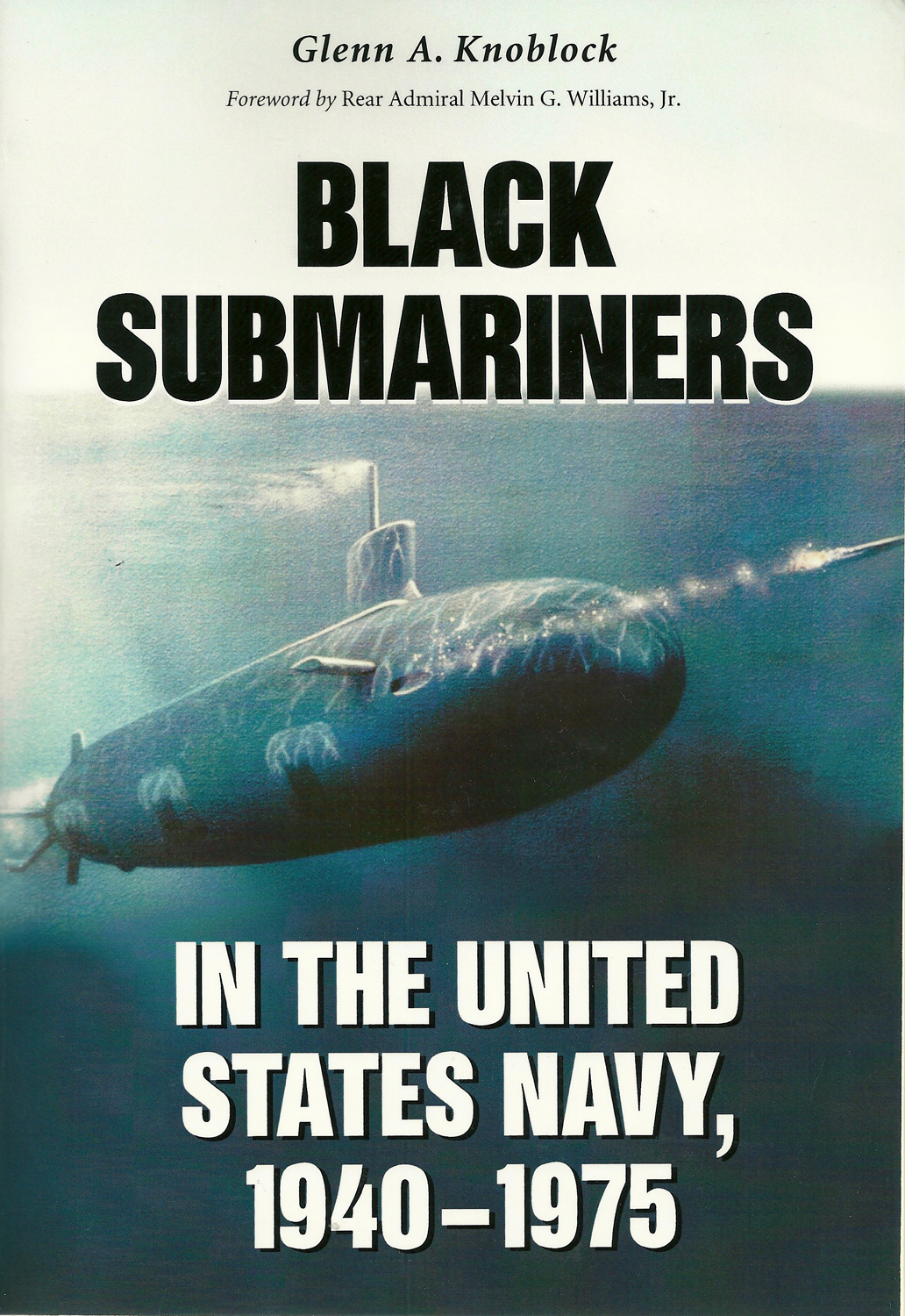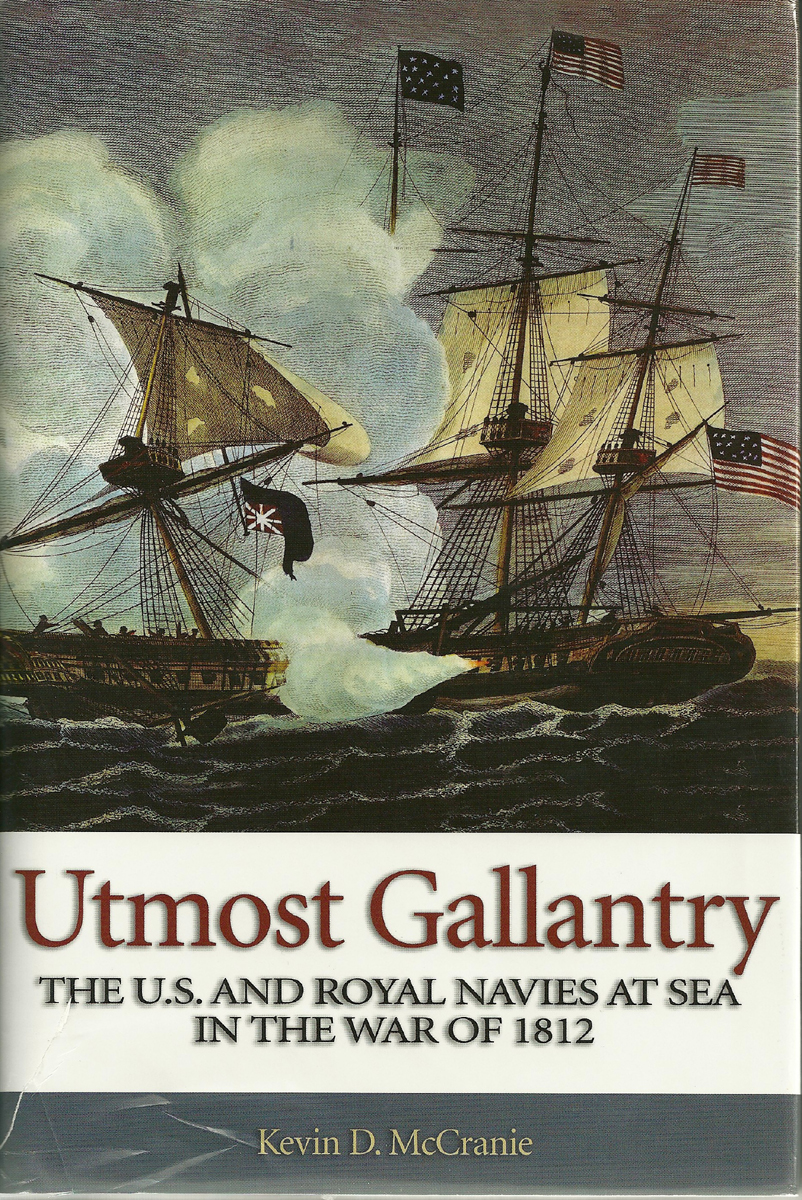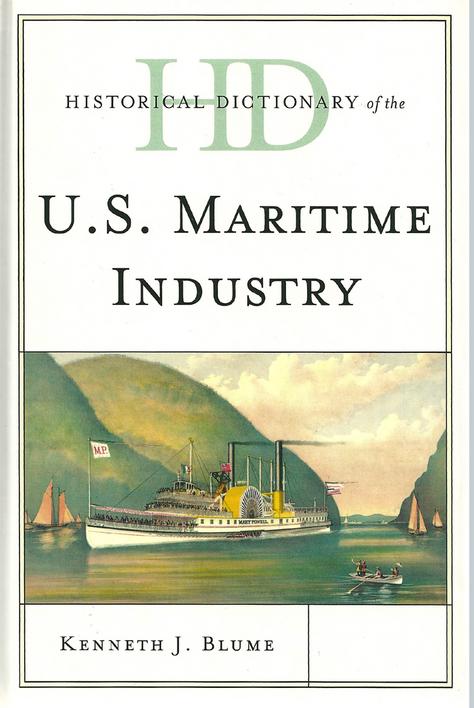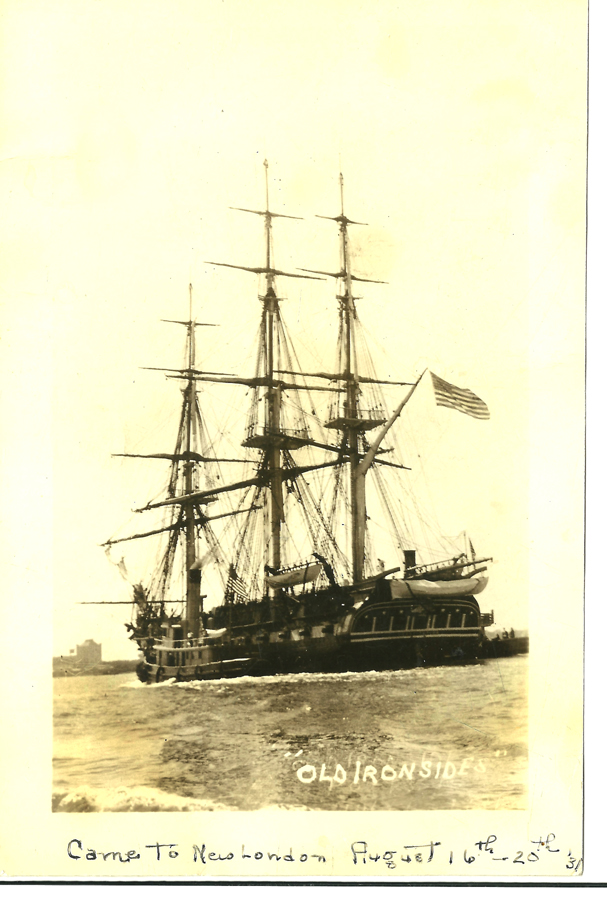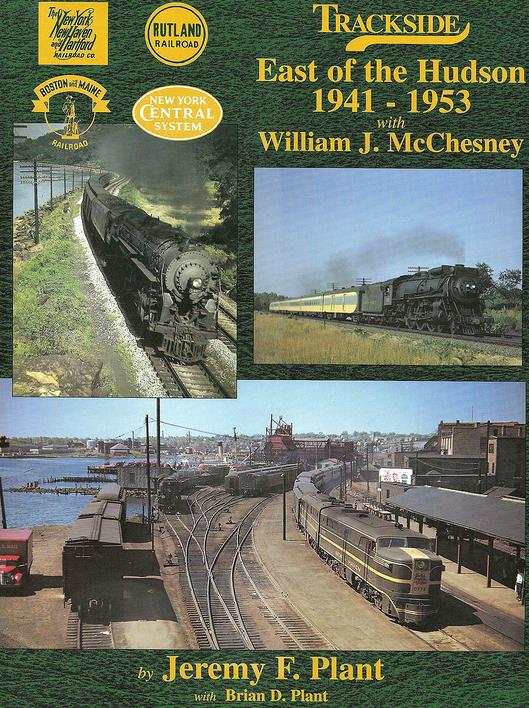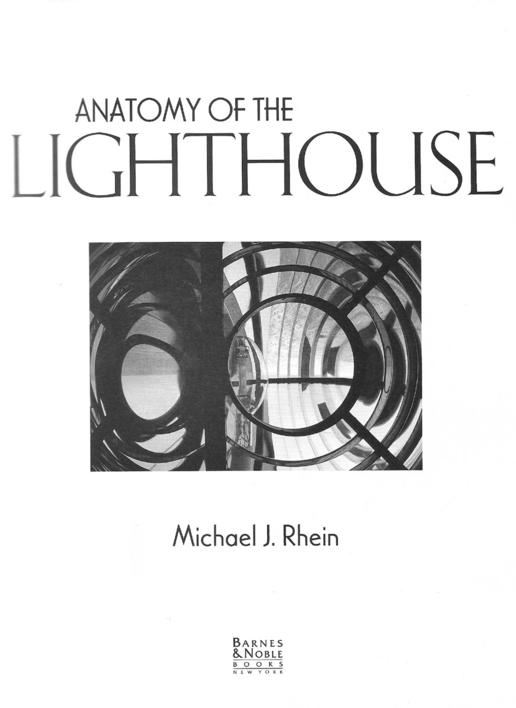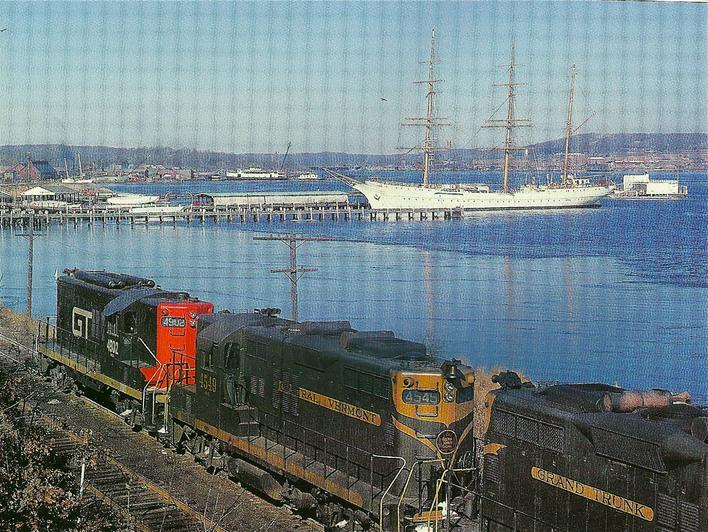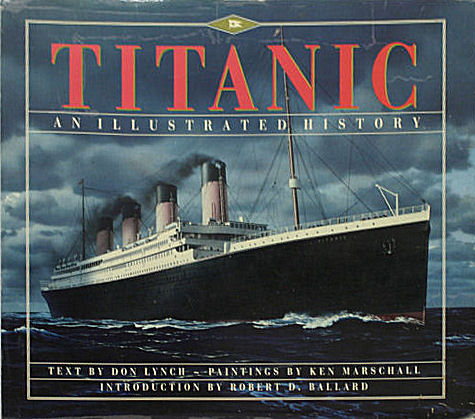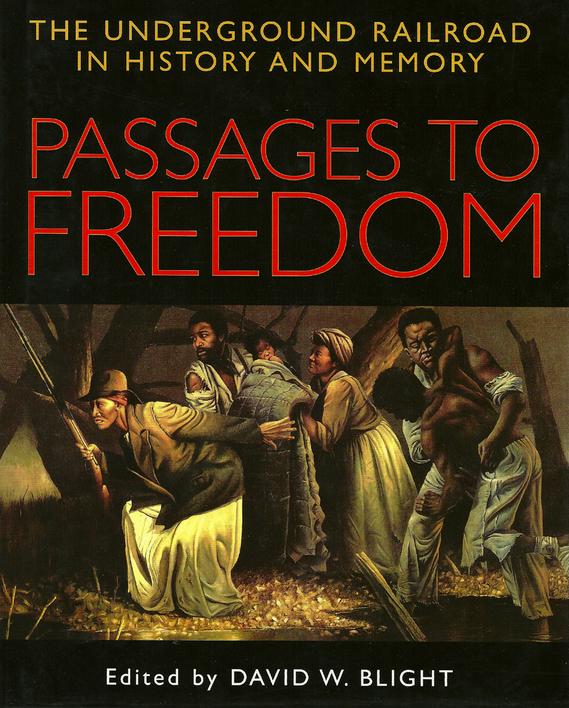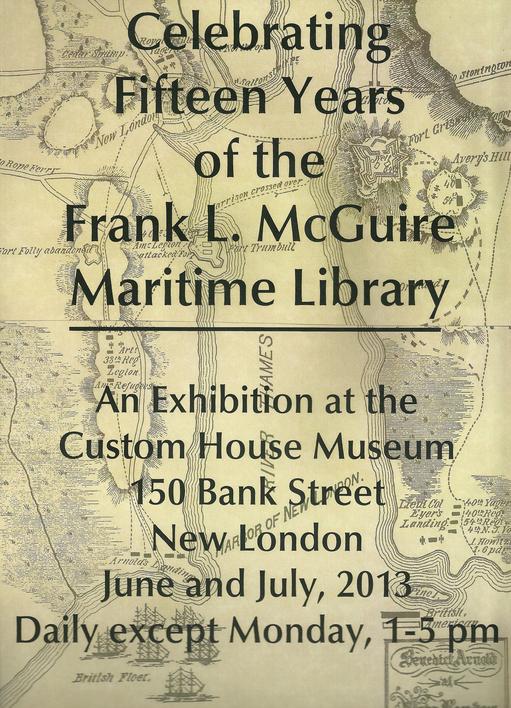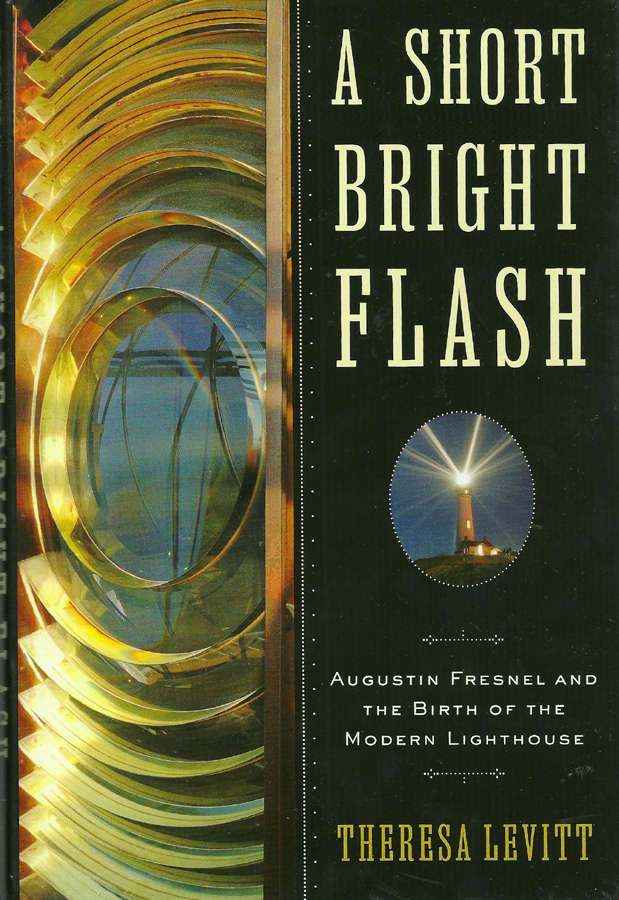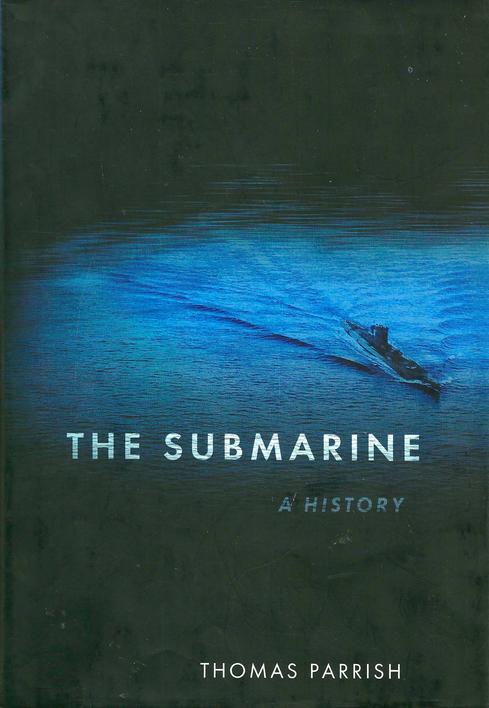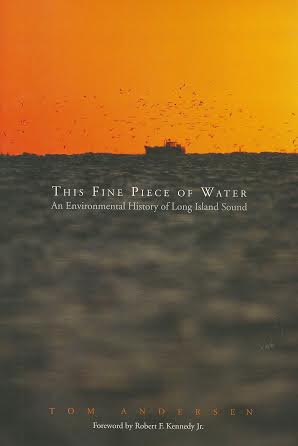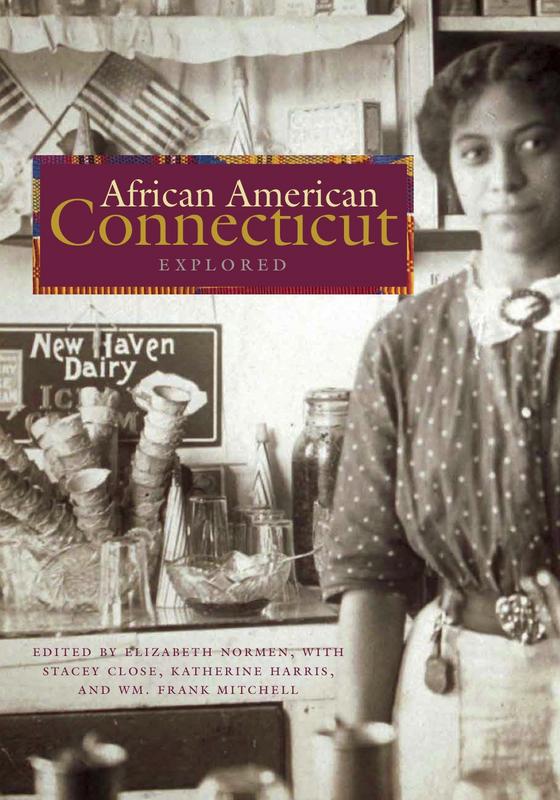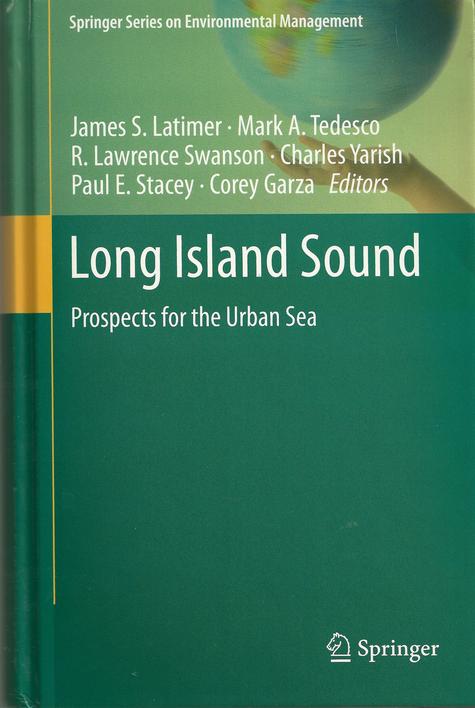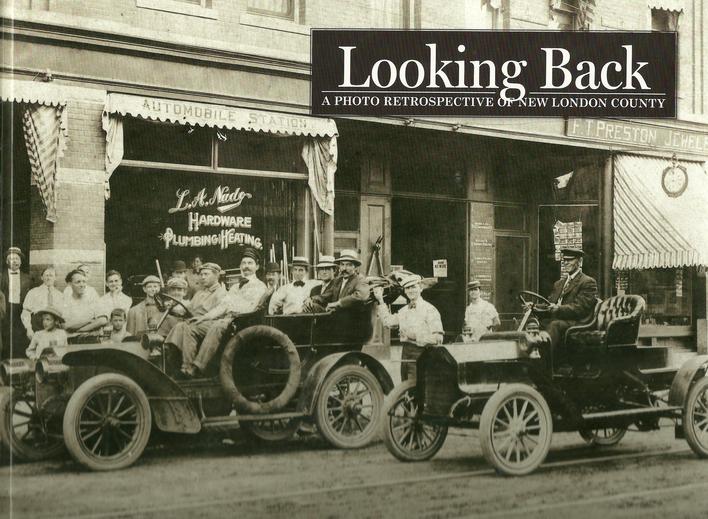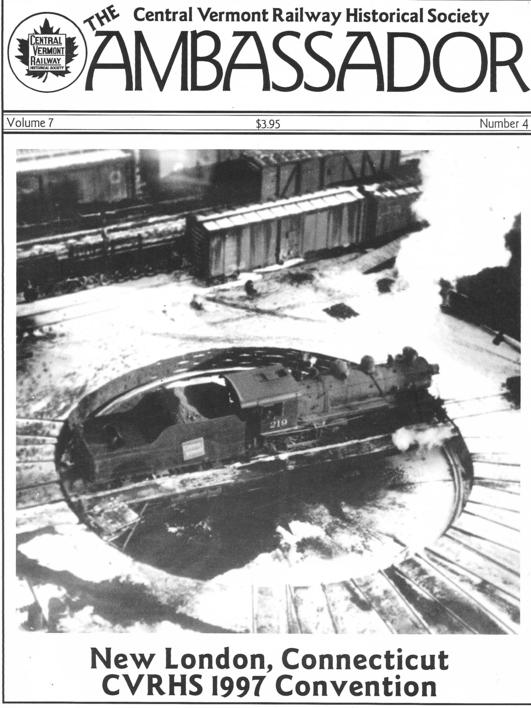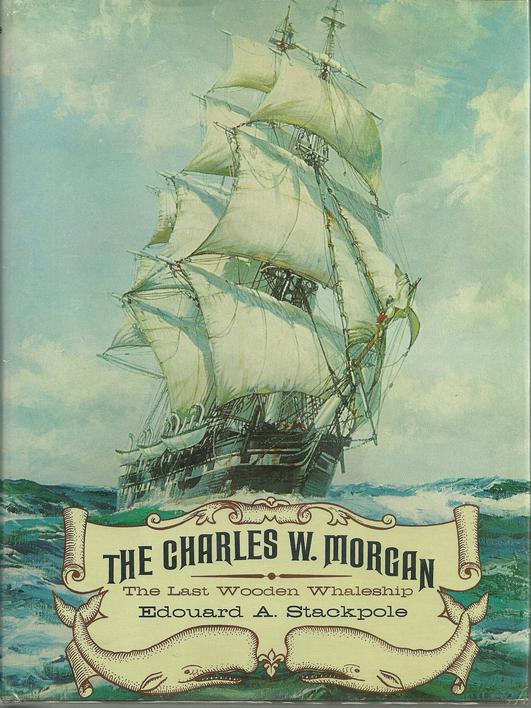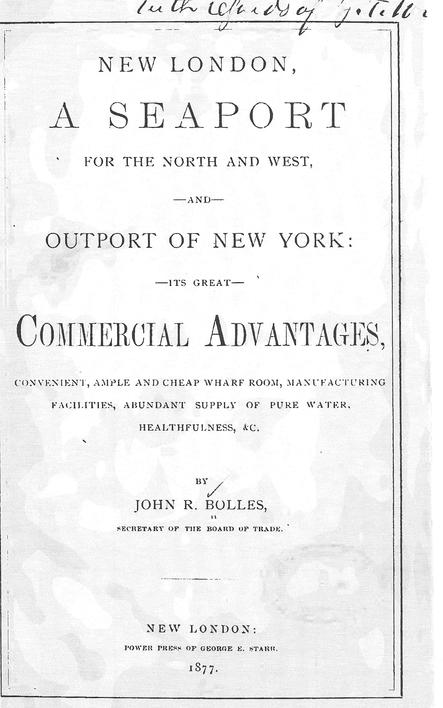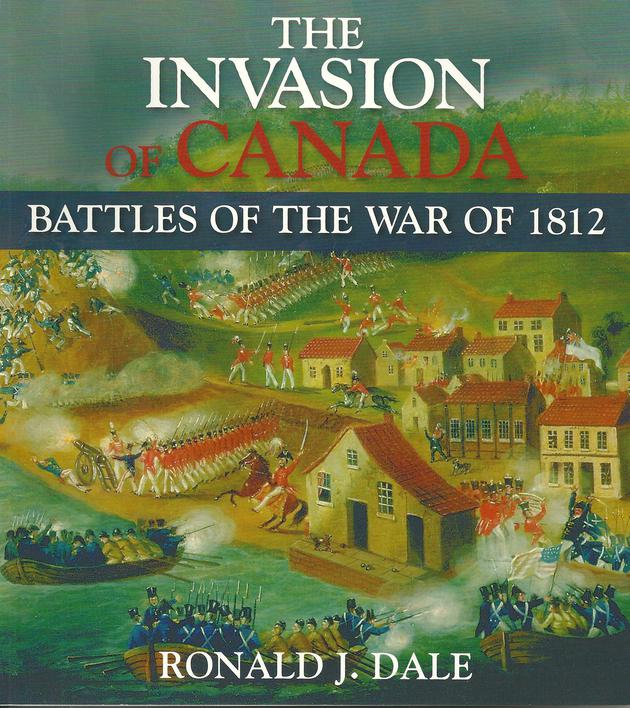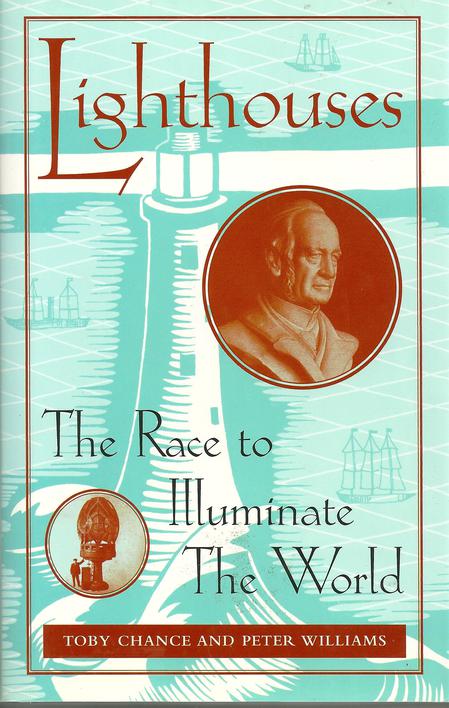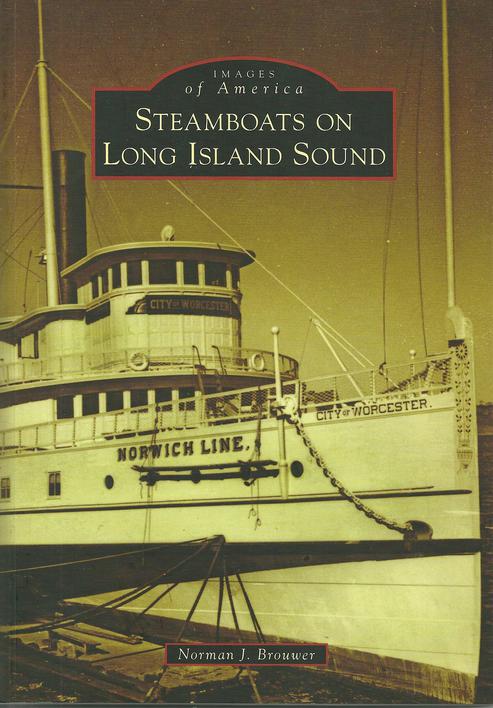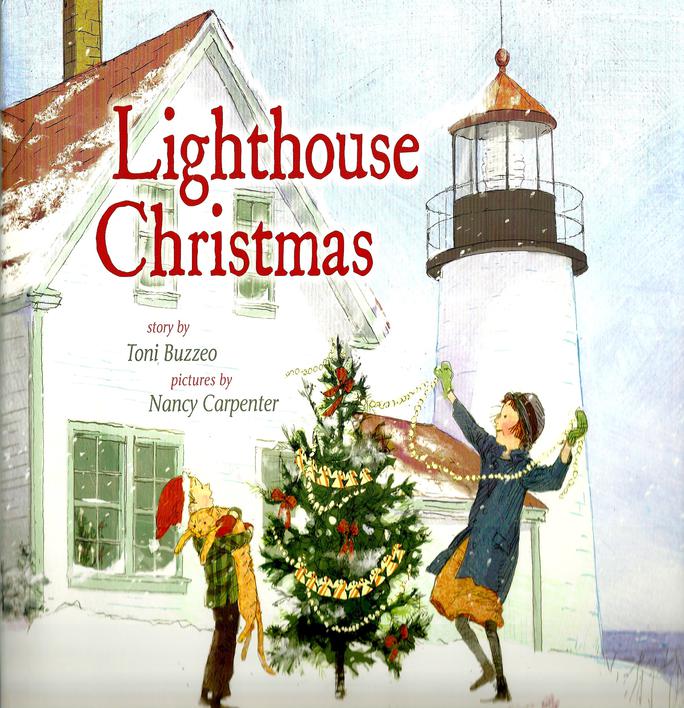BOOK OF THE MONTH 2014 -- 2011
Selected and reviewed by Brian Rogers, Librarian
May, 2011
The LIGHTHOUSES OF CONNECTICUT is one of a series of books about New England lighthouses by Jeremy d'Entremont, one of the foremost current authorities on this ever-fascinating subject. Jeremy has also edited new editions of the popular books of New England maritime history by the late Edward Rowe Snow, and we are delighted that he will speak at our Sentinels of the Sound symposium in July.
We have been expanding the lighthouse book collection in recent months to support the Maritime Society's new custodianship of New London Light, and in so doing have discovered that our area is unusually rich in lighthouse research material: in addition to the approximately fifty titles now at the Custom House (all available for consultation by calling 860 572-0291 for an appointment), the Public Library of New London has good lighthouse holdings, including many appealing items for children and young adults; the Coast Guard Academy Library complements the two downtown collections with special strength in the history and technology of lighthouses, while the library of the University of Connecticut at Avery Point also owns a number of lighthouse books, as does the G.W. Blunt White Library at Mystic Seaport.
June, 2011
Sara E. Wermiel: LIGHTHOUSES.
New York and London, W. W. Norton & Company, 2006
This handsome work is one of the "visual sourcebooks in architecture, design and engineering" published by the Library of Congress in partnership with Norton. Other volumes feature such structures as barns, theaters, canals and bridges, and all are projects of the Library's Center for Architecture, Design and Engineering, established by a bequest from architect Paul Rudolph, famed former Dean of Yale's School of Art and Architecture. Each volume draws from the vast image collections of the Library of Congress, the largest library in the world and, incidentally, the nation's oldest federal institution.
New London's two lighthouses are here, of course, along with hundreds of others that together comprise a magisterial illustrated survey of the history and design of these American landmarks, from their 18th century origins to the l960s. A feature not found in most lighthouse books is the cross-sections and elevations of towers, lanterns and lenses that elegantly show how lighthouses were put together to fulfill their unique humanitarian purpose.
July, 2011
F. Hopkinson Smith
Caleb West, Master Diver
Francis Hopkinson Smith was a popular author in his day, one of his best known works being Caleb West, Master Diver, first published in 1898, a romantic novel set in the challenging, real-life circumstances of constructing Race Rock Light in the treacherous currents off Fisher's Island. Smith was something of a polymath, being not only a writer but a civil engineer and an artist whose drawings of European scenes were much sought after. With Smith as designer/engineer of Race Rock Light, New London's own "master diver," the uniquely skilled Capt. Thomas A. Scott carried out the actual building of the foundation on the submerged reef, a dangerous project lasting almost seven years. (The lighthouse itself took only nine months.) Ten years after Caleb West, Smith acknowledged Capt. Scott's extraordinary achievement in an adulatory description of his friend and business partner in a volume of character studies called "True American Types," a series published in Boston by the American Unitarian Society. A copy of this scarce item recently acquired by Museum Director Susan Tamulevich now complements our two copies of Smith's novel with their handsome variant bindings.
August, 2011
James Tertius De Kay
A Rage for Glory:
The Life of Commodore Stephen Decatur, USN
One of the most rewarding parts of developing the Frank L. McGuire Maritime Library is to track down books that illuminate New London's rich maritime past. This quest recently yielded A Rage for Glory, local author James Tertius De Kay's biography of Stephen Decatur, the celebrated naval officer who brought two frigates and a sloop into New London harbor in June, 1813, to escape a British squadron of superior strength.
Although the British were denied capture of the American ships, their blockade of New London trapped the ships here for the duration of the War of 1812. Decatur himself was able to leave, took command of another ship, was taken prisoner and repatriated after the war (on a ship that brought him from Bermuda to New London) and became even more famous for his bold actions against the Barbary Pirates. He and his wife retired to a mansion they built near the White House, but enjoyed his celebrity for only fourteen months due to his shocking death in 1820, age 41, in a duel with a rival officer.
Our Library also owns Mr. De Kay's The Battle of Stonington, an account of the attack on the village in August of 1814 under the same Royal Navy captain, Thomas Hardy, who had trapped Decatur's ships in the Thames River the year before.
September 2011
Chandler B. Saint and George A. Krimsky
Making Freedom: The Extraordinary Life of Venture Smith
Middletown: Wesleyan University Press, 2009
The inspiring story of Venture Smith (ca. 1729 - 1805) , a slave who succeeded in buying his freedom (in Stonington, in 1765, where he had lived since 1754) is presented here with instructive, eminently readable commentary and well-chosen illustrations. Our copy is a gift from Archie Chester, a long-time supporter of the Frank L.McGuire Maritime Library. The chief source of Venture's story is the remarkable account of his life he dictated, near its end, to a schoolmaster, first published in 1798 in New London. Not surprisingly, the long, twisting chronology, from enslaved African prince to free, prosperous landowner at Haddam Neck, plays out against a maritime backdrop: the voyage from Africa to Rhode Island by way of Barbados; criss-crossing Long Island Sound over the years between Rhode Island, Fishers Island, Stonington and Long Island; life along the Connecticut River. The more surprising backdrop, however, is the steady reminder that slavery was as ingrained in parts of southern New England as firmly as in the Deep South -- a fact which may not be familiar to some readers -- with the largest concentration of slaves living in New London County. Unlike the South, of course, the "institution" gradually waned here, and we are more likely to think of New England as a complex of stations on the Underground Railroad, by which many slaves escaped to freedom. It is well to remember that even in 1839, when a navy officer brought the slave ship Amistad to New London, he did so because slavery was still legal in the state and he intended to sell the captives.
As it happens, September is Connecticut Freedom Trail month, the annual commemoration of that decades-long effort to help slaves reach freedom in the North and Canada. The term "Underground Railroad" gained currency in the early 1830s as a metaphor of the burgeoning growth of the steam-powered railroads. New London's Custom House, opened in 1833, is one of three New London sites on the Freedom Trail, the others being a grave in Ye Antientest Burying Ground and the Hempsted House and district. Fort Griswold, the whaleship Charles W. Morgan, and the former shipbuilding community of Greenmanville (now preserved at Mystic Seaport) are also on the Trail.
October 2011
Marc Songini
The Lost Fleet -- A Yankee Whaler's Struggle Against the Confederate Navy and Arctic Disaster
New York, St. Martin's Press, 2007
There are travails aplenty in this account of whalers struggling to prosper in a dying industry. The Yankee whaler of the title is Thomas W. Williams of Wethersfield, whose long, lively career is one of the threads of Songini's breezy narrative. Even in the best of times whaling was arduous, dangerous work, with ships and their crews enduring storms in temperate waters or ice in the frigid north. Then came the Civil War, with Confederate raiders raising havoc with Yankee whalers and a Union plan to hinder Confederate shipping by blocking the harbors of Charleston and Savannah with stone-laden ships scuttled at the entrances. A number of whalers lay idle in New England at the start of the war, many of them old and worn out, and against the advice of cooler heads the so-called "Stone Fleet" was cobbled together in New Bedford and New London; government agents bought whaler after whaler, including the Corea, Tenedos, and four other New London-based ships. These were heavily loaded with stone and in November, 1861, sailed southward in a barely seaworthy armada. As it happened, the Stone Fleet was a costly failure, despite its vigorous promotion and preparation, but idea was bold, if flawed, and the New London references will be of interest to local history buffs.
November 2011
Judith Navas Lund
WHALING MASTERS AND WHALING VOYAGES SAILING FROM AMERICAN PORTS: A Compilation of Sources
Published in 2001 in a limited edition of 500 copies by the New Bedford Whaling Museum, Kendall Whaling Museum, and Ten Pound Island Book Company
Our latest library purchase comes on the tenth anniversary of the publication of what Stuart M. Frank, Curator of the New Bedford Museum, called "the most important whaling history desk reference to appear in a generation." Whaling Masters and Whaling Voyages is a list of all known whaling voyages from the late 18th century to the early 20th. Half of the hefty tome lists voyages by name of vessel, and the other half lists them by name of the ship's master.
Each entry includes the name of the "hailing" port, rig of the vessel, years of departure and return, location of logbooks when known, and sources of the data. The logbook locations are an impressive and indispensable feature not found in earlier attempts to document whaling voyages. New London, Mystic and Stonington appear frequently, of course, and Groton, Norwich and Saybrook also turn up now and then.
Judith Lund's painstaking work updates, expands and corrects earlier efforts, notably Alexander Starbuck's History of the American Whale Fishery (also in our library), and Reginald Hegarty's Returns of Whaling Vessels Sailing from American Ports. It also supplants Whaling Masters, a work issued by the Federal Writers Project in 1938, one of the less well known job-creation programs of the Roosevelt Administration. For many years Whaling Masters was the most important list of those intrepid seafarers who were the driving force behind the whaling trade. Judith Lund is former Curator of the New Bedford Whaling Museum. The Kendall Whaling Museum, formerly in Sharon, Massachusetts, has been incorporated into the New Bedford Museum since this book was published.
December 2011
W. Barksdale Maynard
Architecture in the United States 1800-1850
New Haven, Yale University Press, 2002
Notwithstanding the alluring 1838 view of the Schuylkill River and Philadelphia's Fairmount Waterworks on its jacket, one would rightly ask why this book is owned by a maritime library in New London, Connecticut. The answer lies in the photograph on the back, an 1846 view of Robert Mills's great 1840 Greek Revival building for the U.S. Patent Office in Washington. Mills, architect of our 1833 New London Custom House, was important enough in Maynard's narrative to rate more than 40 index references. He was the first professional American-born architect, was mentored by Thomas Jefferson (actually living at Monticello for a time,) and was later responsible for three more prominent capital landmarks, the Washington Monument, the Treasury, and an early post office headquarters. New London's custom house is a restrained example of the architectural style that dominated the first half of l9th century America, although it was being challenged as early as the 1830s, when our Custom House was built: William Ross, an Englishman visiting New York in 1834, observed that "The Greek mania here is at its height, as you may infer from the fact that everything is a Greek temple, from the privies in the back court, through the various grades of prison, theatre, church, custom-house, and state-house." The mania faded, of course, but fortunately for posterity countless examples remain, gracing the nation's streetscapes with their timeless symmetry.
January 2012
Harold M. Hahn
Ships of the American Revolution and their models
Naval Institute Press, Annapolis, 1988
One of the most generous donors to the Frank L. McGuire Maritime Library is Robert Stewart of Mystic, retired engineer and model-maker extraordinaire. His handsome ship models, fitting easily into the shelving, add a distinctly nautical theme to the room. Our shelves also hold well over one hundred books donated by Bob in the past two years, and we have chosen one of them for our January feature: Harold M. Hahn's Ships of the American Revolution and Their Models, published in 1988 by the Naval Institute Press in Annapolis. The book is of interest to more than the fraternity of model builders, however: before discussing the models of seven different ships, the author provides a fascinating account of the history of each, among them the story of the ill-fated frigate Confederacy, built on the Thames at Norwich as part of a program authorized by Congress in 1776 to develop the colonial navy. After much delay due to lack of materials and many administrative problems, the ship was launched in 1778 and towed to New London for fitting out under Capt. Seth Harding. The short career of Confederacy is a litany of misfortune that reads like the synopsis of a historical adventure novel, ending with her capture by the British off Delaware in April, 1781. After initial optimism that she could be converted into a 40-gun ship of the line, the Royal Navy declared that after a close inspection the renamed HMS Confederatewas in fact unfit for service after three tumultuous years afloat. She was, nevertheless, a very handsome ship, as is apparent from the plans that the author reconstructed from the originals in England's National Maritime Museum.
February 2012
W. Jeffrey Bolster
Black Jacks: African American Seamen in the Age of Sail
Cambridge: Harvard University Press, 1997
For Black History Month we present a book dealing with the considerable part played by Black Americans, both slave and free, in the maritime life of the colonies and the new nation that emerged after the Revolution and the War of 1812. The author opens with a moving quotation from Frederick Douglass, a skilled ship caulker in Baltimore who knew a great deal about ships and sailing: "Those beautiful vessels, robed in white, and so delightful to the eyes of freemen, were to me so many shrouded ghosts." Calling them "freedom's swift-winged angels," he swore that one of them would someday bear him to freedom.
A sailor's life at sea in the Age of Sail was harsh, marked by low wages, hard work and extreme discomfort. Many whites, perhaps most, wouldn't consider seafaring, but for slaves and freedmen of a certain bent it represented opportunity. Even with its privations and brutality, a sailor's life was considered preferable to the punishing toil and other horrors common in southern plantation life. Bolster examines all aspects of this fascinating history, noting among other things that 18,000 free blacks saw sea service in the War of 1812, that several generations of black men "partially circumvented the racist norms of American society" in becoming part of the international maritime culture, and that as a result of their travels abroad, black mariners were "central to the process through which early black society constructed and defined itself."
March 2012
Thomas C. Gillmer
Old Ironsides: The Rise, Decline and Resurrection of the USS Constitution
Camden, Maine: International Marine, 1993
New Londoners enjoy a unique link to the frigate USS Constitution, that storied centerpiece of the historic Charlestown Navy Yard. Following one of her several rebuilds, some of the replaced planks were fashioned into the massive doors of the Bank Street Custom House. With this in mind, our book of the month is Thomas Gillmer’s authoritative look at the Constitution's wood structure, from her launch in Boston in 1797 as an exemplar of the finest in American shipbuilding, through two wars of independence, and the two ensuing centuries during which she was almost scrapped several times, rehabilitated as often (and not always in the best way) until she was at last recognized as a priceless national symbol to be preserved at all costs. The author, a former professor of naval architecture at the Naval Academy and an eminent yacht designer, was asked by the Navy in 1991 to study the Constitution and recommend action to ensure her long-term survival. His book is an eminently readable, occasionally feisty, and handsomely illustrated report on the six months he spent on the project. Gillmer found the ship to be a "deteriorating national monument" and was not shy about saying what should be done. Whether those ultimately responsible agreed is perhaps known only to them and to Gillmer. Meanwhile, a Boston website (NorthEnd.com) reported in October, 2009, on the occasion of one of Constitution's famous harbor turn-arounds, that she was undergoing a three-year restoration to prepare for the bicentennial of the War of 1812.
Our copy of Gillmer's book is from the estate of the late Dan Wolverton, a maritime history enthusiast and dedicated long-time proponent of the Custom House Museum.
The family-friendly USS Constitution Museum at Charlestown Navy Yard serves as the "memory" and "educational voice" of the famous ship docked just outside. From time to time it offers programs on other aspects of maritime history as well: through March 24, for example, it is hosting the 33rd annual Model Shipwright Guild Exhibit, sponsored by the Boston Marine Society. The Guild encourages the art of modeling with workshops, activities, and exhibits, while the Boston Marine Society resembles our own New London Maritime Society, telling the story of the port of Boston through its archives, gallery, and outreach programs.
April 2012
Geoff Hunt
The Sea Painter's World: The New Marine Art of Geoff Hunt
London, Conway, 2011
We have long admired the work of Geoff Hunt, one of Britain's foremost marine painters, artist of the covers of Patrick O'Brian's Aubrey-Maturin novels and occasional visitor at Mystic Seaport, which has published some of his prints and one of his books. The new book is a sequel to a similar 2004 work, both volumes presenting examples of his work amplified by his own commentary. We were delighted to find, on the last page, a picture worth the price of the book: an oil entitled "Captain Hardy's Ramillies after the 'Battle of Stonington', August 1814." We see the British squadron after it has stood into the Sound following the bombardment, the sunny skies untroubled by the wispy smoke rising from the distant shore. Hunt has painted several 18th and 19th century American subjects, but this is the first we have come across depicting a historical scene so close to home. A photo of a model of HMS Ramillies, and photocopies of several naval reports written aboard her, are part of our Robert Bachman Archive on the War of 1812.
Here at the Frank McGuire Library our interest in marine art is focused on a subset of the genre in which artists document or re-imagine places and events in history. Probably the best known American practitioner of documentary marine art is John Stobart: both of his impressive large-format books are in our collection and, as it happens, one of these, American Maritime Paintings of John Stobart, was acquired some years ago by our founder, the late Lucille Showalter, in memory of Attorney Frank L. McGuire.
May 2012
Glenn A. Knoblock
BLACK SUBMARINERS IN THE UNITED STATES NAVY, 1940-1975
Jefferson, NC and London, McFarland & Company, 2005
The recent obituary of David Collier of Waterford (The Day, March 24, 2012) outlining his career in the Navy, and later at Electric Boat, mentioned his inclusion in this book. We promptly acquired it and can report that it lives up to its favorable reviews. Black Submariners is the story of the fundamental change in Navy race relations that took place from the World War II years to the 1970s, much of it seen through the prism of the personal histories of the sailors themselves. Before and during the war, Black sailors had been restricted to the jobs of mess attendants and cooks, with the now-extinct rating of "steward," but pressure steadily grew for them to be offered the same career opportunities as Whites, and it took a 1948 executive order by President Truman to end this discriminatory restriction. The defining feature of the book is Knoblock's skill at illuminating the narrative with the personal histories -- often with photographs -- of 82 retired Black submariners. Like the late David Collier, many settled here after their service, thus the book is not only a candid account of how integration came at long last to the Navy but provides valuable glimpses into local social history.
June, 2012
Kevin D. McCranie
UTMOST GALLANTRY - The U.S. and Royal Navies at Sea in the War of 1812
Annapolis, Naval Institute Press, 2011
Not so long ago the War of 1812 was thought of as a "forgotten" war, if one thought of it at all: a "second war of independence," opposed by many and accomplishing little. But as its bicentennial approached, giving rise to new books re-examining an old subject, the War of 1812 re-entered the public consciousness. This is due in no small part to the national anthem, our most frequent expression of national pride, which was born in the red glare of rockets exploding over Baltimore's Fort McHenry in September, 1814, just a month after the bombardment of Stonington. In spite of its disastrous effect on New England seaborne commerce, this naval war ultimately aroused a new sense of national vigor that kick-started the westward expansion. By virtue of skill and discipline our small navy had prevailed over the ships and captains of the world's largest fighting fleet. One of the latest accounts of the war is told by Professor Kevin McCranie of Newport's Naval War College. A reader comes away as impressed as our forebears were when learning of the "utmost gallantry" displayed by American officers and sailors against all odds, from the first encounter on June 23, 1812, to the engagements in the distant Indian Ocean in April,1815, by USS Hornet and USS Peacock, whose officers did not know the peace treaty had been ratified in February. A New London connection emerges at the end: Hornet had been part of Stephen Decatur's squadron trapped in the Thames since 1813, but had escaped under Capt. James Biddle in November, 1814, later defeating HMS Penguin in the South Atlantic and on her way to the Indian Ocean trade routes in search of British merchantmen.
October 2012
Kenneth J. Blume
Historical Dictionary of the U.S. Maritime Industry
Scarecrow Press, 2012
The cover depicts the famous Hudson River steamboat Mary Powell , but we could wish that the author had chosen one of the equally famous passenger vessels that operated in Long Island Sound, such as those of the Norwich & New York Transportation Line or the Fall River Line between New York and Boston, the famous company that somehow hung on until 1937, long after uninterrupted train service between those cities began in 1889 with the first Thames River bridge. Both lines have entries in this 581-page tome, along with every other American shipping company and shipyard known to the author, a maritime historian. Individuals who played major roles in our maritime history are here, as are federal maritime legislation, famous ships, and enterprises such as Merritt-Chapman & Scott, the maritime salvage and construction firm that absorbed "Cap'n Scott's" historic New London operation. Electric Boat is here, as is Interstate Navigation's Pt. Judith-Block Island ferry and Capt. Moses Rogers, of New London, who planned and conducted the first transatlantic steamship crossing, in 1819. But there are peculiar omissions: no mention of the New London-Long Island service (far bigger than the Block Island operation), or of Eastern Shipbuilding (now the site of Electric Boat) in the entry for the 20,000-ton S.S. Minnesota, launched in Groton in 1905, the largest cargo liner of its time, now listed in the National Maritime Hall of Fame as one of the great ships of U.S. maritime history. These omissions aside, a wealth of maritime information is available in this latest addition to the Frank L. McGuire Library.
September 2012
After a summer hiatus we were thinking about the next Book of the Month from by the Frank L. McGuire Maritime Library when into our hands dropped two remarkable photographs of the USS Constitution, "Old Ironsides," visiting New London August 16 - 20, 1931. One is shown here. They were discovered a few weeks ago by Head Docent Bill LaRoue in a family photo album, and we have had enlargements made for the library.
This was not the first visit of the Constitution to New London: as noted in our current exhibition on the War of 1812, drawn from an archive assembled by Waterford historian Robert Bachman, "Old Ironsides" was in New London a year before war was declared, engaged in a coastal harbors survey.
Many readers probably know that this past August 19, exactly 81 years after her New London visit, the historic ship made a short voyage in Boston Harbor under sail, the first since 1997. Also last month a handsome stamp bearing her image was issued by the Post Office to commemorate the War of 1812.
November 2012
William J. McChesney and Jeremy F. Plant
TRACKSIDE EAST OF THE HUDSON 1941-1953
Scotch Plains, NJ. Morning Sun Books, 1998
Viewers will be forgiven if they don't recognize the lower view on the cover. The photographer is standing on a small building on the water side of the tracks at New London's Union Station, it is 1950 or so, and a train for Boston is pulling in. The tracks remain today, but little else does. The New Haven Railroad yard has given way to the Waterfront Park and Fisher's Island ferry terminal, and South Water Street now follows the tracks toward the Custom House. Although the New Haven Railroad was a large presence in downtown New London, the maritime relationship was chiefly geographical and aesthetic: the Shore Line offered -- and still offers -- one of America's most scenic train trips. New London's other mid-20th century railroad, the Central Vermont, was a freight line running from Canada down to the Port of New London in a classic maritime rail connection. Today we see rather little of its successor, the New England Central, but one of the successors to the New Haven, the Providence & Worcester, often sends a freight train rumbling past the Custom House, reminding us that when our granite building was finished in 1835 there was no railroad cutting it off from the harbor.
This book and five others about the storied New York, New Haven & Hartford are the recent gift of Margaret Palmer, from the library of her late husband, Robert Hauschild, whose paintings are currently on view in the Custom House. By happy coincidence, one of the Hauschild paintings is a "portrait" of a New York Central "Hudson" locomotive identical to the one seen at upper left. At upper right is a rare view of the short-lived "East Wind" passing Niantic on its way from Washington to Bangor, Maine. The canary yellow train turned north at New London and operated via Norwich and Worcester, bypassing Boston to save time. A summer only service, it lasted from 1940 to 1943, when wartime conditions led to its early demise.
December 2012
Michael J. Rhein
Anatomy of the Lighthouse
New York, Barnes & Noble Books, 2000
As we approach the winter solstice and the longest night of the year, we are reminded of the joys of light, both personal and universal: candles on
mantels, menorahs, or sills; life-giving warmth from the sun; the quiet splendor of a full moon; the flicker of a campfire. Add to these the beacon of hope from a lighthouse. The introductory text to this month's book begins, "A beacon of hope to those in peril on the sea, the lonely lighthouse stands impervious to the fury of the ocean as it steadfastly projects its life-saving beam to storm-tossed sailors." Perhaps the most compelling reason we love lighthouses is that they not only provide a vital service but, like candles and stars, symbolize the presence of light in our lives. Michael Rhein's handsome history combines superb photography, fascinating technical detail expressed in everyday terms and elegant schematics, and a narrative honoring all those seekers who, by trial and error, brought the lighthouse from its primitive origins to today's noble landmarks. Our copy is the gift of Margaret Palmer, from the library of her late husband, Robert Hauschild.
February 2013
George F. Melvin and Jeremy F. Plant
CENTRAL VERMONT IN COLOR
Scotch Plains, NJ, Morning Sun Books, 2000
The subject this month is not fall foliage, as the title implies, but rather the somewhat obscure rail link linking the port of New London with Montreal by way of Massachusetts and Vermont. The line was established by the Central Vermont Railway in 1871, fulfilling the dream of entrepreneurs who wanted a railroad that would bring prosperity to landlocked Vermont as a "land-bridge" between New London and the Great Lakes. One of the very early Connecticut railroads, the New London Northern, operating between its namesake and Millers Falls, Massachusetts, was leased by the CV in 1871 to complete the long-planned route. Instead of hauling goods and materials to ships docked in New London, however, it developed over time that most of the freight brought south was interchanged with other trains, namely those of the New Haven Railroad, to be hauled to New York or Boston.
For many years trains operated between East New London and points north, local freights serving the mills of the Thames Valley and through trains operating into Vermont and Quebec to interchange with the CV's Canadian owner, the Grand Trunk Railway. The authors have found interesting photographs from the 1950s, when the trains were pulled by steam locomotives, showing the terminal in East New London and trains traveling along the west bank of the Thames. The view above shows a northbound train approaching the Coast Guard Academy pier in February, 1966, before the Eagle got its diagonal red stripe. The caption reads: "The maritime roots of New London go back far and deep. Its founders thought its splendid harbor on the deep estuary of the Thames would ensure its stature as the greatest port along the eastern seaboard." This naive forecast brings a smile today, but a nearly a century and a half after the CV began running trains between New London and Montreal there is no disputing the fact that, as this picture demonstrates, its southernmost stretch was one of the most scenic rail lines in New England. In 1995 the CV was sold by the Canadian National (which had bought the Grand Trunk Railway in the meantime) to the New England Central, which operates the line today.
March 2013
Don Lynch
TITANIC - AN ILLUSTRATED HISTORY
New York, Hyperion, 1992
If readers of this column missed the astonishing announcement that Australian mining billionaire Clive Palmer intends to build a replica of the Titanic in China, it is apparently true. Construction is not yet under way, but many of us won't believe it is happening until we see photographs, and even then the most dubious will suspend belief until they see her steaming into New York at the successful conclusion her first transatlantic crossing -- a success denied the first Titanic for the reasons we know so well. As it happens, the International Iceberg Patrol, formed after the Titanic went down to ensure that such a disaster would not be repeated, is based right here in New London. This month's feature, then, is Titanic - An Illustrated History, by the historian of the Titanic Historical Society, Don Lynch, with an introduction by undersea explorer Robert Ballard, who with his team in 1986 was the first to find and board the wreck. The book combines dozens of historic photographs of the ship with a series of colorful paintings by Ken Marschall that bring the ship to life: her construction in Belfast, Northern Ireland, her grandeur at sea, her luxurious interior, her sinking, the shattered remains on the ocean floor, and depictions of Ballard's explorations. We invite members of the Custom House Museum to come to the library to spend an hour or so perusing this fascinating book 101 years after she went to the bottom. And if you're not a member, please join!
APRIL, 2013
Gramatky, Hardie
LITTLE TOOT AND THE LOCH NESS MONSTER
New York, G. P.Putnam's Sons, 1989
Of the classic maritime books for young children, Hardie Gramatky's Little Toot is perhaps the most famous. Published in 1939, it has never been out of print. To commemorate the late author's centennial, it was published in a new edition in 2007, restoring the original colors and other design qualities. Little Toot gave rise to several sequels, among them the story of the adventurous tugboat's encounter with the elusive creature from the depths of Loch Ness. At the time of Linda Gramatky Smith's lecture at the Custom House in 2009 for the opening of the show "Tug Boats and Little Toot," she presented us with a notebook of copies of her father's sketches, notes and drafts that led up to the 1989 publication. Its 105 pages of handwritten ideas, ruminations and sketches form a stream-of-consciouness riff on the art of creative writing that goes well beyond the story of Little Toot's adventure in Scotland. Here and there Gramatky writes out snippets from writers that inspired him: Faulkner, Chekhov, Cather, Woolf, Proust, Joyce, and T.S. Eliot, to name only some. When one reaches the end of what feels like a real, if silent, communion with Hardie Gramatky, one is amazed by the philosophy and adult moral values lying just below the surface of this outwardly childlike story of a quest and the trusting friendship that results.
MAY 2013
David W. Blight
PASSAGES TO FREEDOM: The Underground Railroad in History and Memory
Washington, Smithsonian Books, 2004
The connections between the New London Custom House and the 1839 Amistad incident are well known. A permanent exhibit in our museum describes in image and text the events that led to the trial (and release) of the captive Africans after they were brought to New London by a Navy officer who wanted to claim them as his property. The cargo of the Amistad was later auctioned off at the Custom House. A less well known event took place here in 1858 when a fugitive slave, Benjamin Jones, found himself in New London as a stowaway aboard a lumber schooner. He was promptly arrested by the federal agent at the Custom House, but local abolitionists protested vociferously and effectively, and "Stowaway Joe" was released.
Passages to Freedom, edited by a Yale history professor, presents illustrated essays by fifteen historians telling the story of the clandestine "railroad." Of particular relevance is a chapter on the National Park Service Network to Freedom, a program authorized by Congress in 1998 to expand our knowledge of the largely undocumented system that enabled thousands of slaves to escape northward or westward. An ongoing program, it encourages grassroots efforts to identify and preserve the sites -- homes, other buildings, even caves -- that provided sanctuary along the way or were significant for other reasons. Our Custom House was placed on the Network to Freedom list in 2010.
June--July, 2013
Rather than feature a single book, we want to take this opportunity to invite readers and friends to come to the Custom House for a look at our exhibit celebrating the 15th anniversary of the Frank L. McGuire Maritime Library.
On view in the second floor gallery are forty-five books, nautical charts, newspaper pages, a rare newsletter from the Maritime Officers Training School (at Fort Trumbull, 1939-1946), a large triptych of exquisite 1855 charts of Long Island Sound and its shorelines, and numerous other items relating to New London's rich maritime history. Many items are the gifts of supporters and friends, while others have been purchased in recent years with library funds. The show will be on display for the months of June and July.
August-September 2013
Theresa Levitt
A SHORT BRIGHT FLASH:
Augustin Fresnel and the Birth of the Modern Lighthouse
New York, W. W. Norton, 2013
This has been "lighthouse summer" in New London. By happy coincidence, this book about Fresnel's invention ushered in the Custom House Maritime Museum's summer programs about local "Sentinels of the Sound," our custodianship of Race Rock Light, and the Post Service's new lighthouse stamps, one of which features New London Harbor Light. Levitt, a graduate of MIT and Harvard, tells the story of Augustin Fresnel (1788-1827), whose revolutionary lens enabled lighthouse beacons to shine much more brightly and thus to be seen from a far greater distance. As she says, "safely lighting the seaways of human commerce allowed international trade and colonial ambitions to flourish," while "harnessing the laws of optics to save lives" reinforced the 19th century belief that science was "the engine of progress and civilization." This is a very good read, crammed with fascinating details about the evolution of lighthouse technology.
October 2013
Thomas Parrish
THE SUBMARINE - A HISTORY
New York, Viking Penguin, 2004
Our library has benefited greatly from the donations of friends who have an abiding interest in New London's maritime heritage. Among them is Gordon Napier of Westerly, introduced to the Custom House a few years ago by the late Archie Chester, whose books reflect the professional interest in submarine design he shared with Archie. This month we are featuring one of these, Thomas Parrish's comprehensive history of the mysterious "boats" -- and locals know they are always referred to as boats -- that are so important to the economy and society of southeastern Connecticut. Parrish's animated chronicle, full of facts and opinions, and not overly technical, makes the story both entertaining and instructive for the general reader. The 37 page references to Electric Boat alone indicate that much of this history happened right here on the Thames River, while the 35 page references to the controversial Admiral Hyman Rickover will remind readers of a certain age of the volcanic controversies between the Navy and EB that one read about in the 1970s and early 1980s, before the octogenarian admiral was forced into retirement by Ronald Reagan's Secretary of the Navy, John Lehman.
November 2013
Northeast Corridor Improvement Project
BANK STREET WATERFRONT - NEW LONDON, CONNECTICUT
Washington, U.S. Department of Transportation, 1984
Not long ago we were casting about for a book that could benefit from conservator Gene MacMullan's ministrations. Our eye fell upon a nondescript item in the New London section we had noticed before but never examined. Closer inspection revealed it to be a historical study of Bank Street and its waterfront, commissioned in 1981 by the Federal Railroad Administration in connection with the Northeast Corridor Improvement Project.
At New London the objective was to mitigate the impact to the waterfront between Shaw's Cove and Union Station when the swing bridge was replaced in a more easterly site and the tracks realigned accordingly. The 276-page study presents the findings of the archaeological digs together with a history of the businesses that once occupied Bank Street and its waterfront in the 19th and 20th centuries.
Standing mid-way between the cove and the station, the Custom House was central to the life of the port in its heyday and shows up prominently in the maps that accompany the text. Thanks to Gene MacMullan's expertise, this re-discovered treasure so relevant to the history of the Custom House can be shown here with its new covers and custom-made binding held firmly together with elegant aluminum posts. We invite you to come in for a look on Thursdays between 1:00 and 5:00 p.m. or at another time by arrangement with the librarian (860 572-0291 or [email protected]).
January 2014
Tom Andersen
THIS FINE PIECE OF WATER
An Environmental History of Long Island Sound
New Haven, Yale University Press, 2002
We begin 2014 with a book on the subject of this year's programming at the Museum: a celebration of Long Island Sound, the great estuary first charted by Adriaen Block 400 years ago. The author, who recently spoke about the Dutch explorer at the Society's annual meeting, is associated with the advocacy group Save the Sound. His book traces the impact of humankind on these waters from earliest times to the shocking 1987 discovery of severe oxygen depletion (hypoxia) that was soon identified as the reason for fish kills and the lobster and oyster die-off. Once the problem was identified, the restoration of the Sound began on many fronts, and continues today. Twelve years later, this book is still a call to vigilance by all who value these scenic waters as an indispensable commercial and recreational waterway and a rich source of food. Chapters on the prehistoric origins of the Sound and Block's early explorations provide a colorful backdrop to the later story.
February 2014
Elizabeth J. Normen, editor
AFRICAN AMERICAN CONNECTICUT EXPLORED
Middletown, Wesleyan University Press, 2013
For Black History Month, the Museum is sponsoring the editor of this book (also editor of the magazine Connecticut Explored,) together with one of its thirty contributors, Elisabeth Petry, in a talk at the Custom House on February 9 at 2:00 p.m. These fifty-four essays by historians and other writers serve as "a springboard to further reading and study" of the Black experience in Connecticut. References to individuals and organizations in New London from colonial times to the present bring pieces of the story close to home. Ms. Petry's revelatory essay discusses her mother Ann Petry's 1953 novel, The Narrows, about a doomed mixed-race love affair played out in "a Connecticut port city" based in part on New London.
March 2014
James S. Latimer, Mark A. Tedesco, R. Lawrence Swanson,
Charles Yarish, Paul E. Stacey, Corey Garza, editors
LONG ISLAND SOUND: PROSPECTS FOR THE URBAN SEA
New York, Springer, 2014
Published just a few weeks ago, this is a landmark in the recorded history of the Sound. While trying to locate a copy of its predecessor, The Urban Sea (1976), we happened on this brand new title, snapping it up despite the hefty cost typical of major science publishers. Chapters describe the Sound's human history, geology, oceanography, geochemistry, pollutant history, biology and ecology in order to provide "a firmer foundation for improving ecosystem-based management of the Sound -- particularly as we confront climate change." The material on oceanography and geochemistry is technical, but a useful summary of the socioeconomic history of the Sound ("transportation," "industrialization," "fishing," etc.) is wholly accessible, while chapters on geology, biology and ecology will reward the diligent lay reader. Fifty-seven researchers and educators contributed to the effort, sixteen of them associated with programs at the University of Connecticut, Avery Point, and Mystic Seaport. The editors hail from EPA offices at Narragansett and Stamford; Stony Brook University; New Hampshire Fish and Game Dept.; and California State University/Monterey Bay, Seaside, CA.
May 2014
LOOKING BACK
A Photo Retrospective of New London County, New London, The Day, 2013
Readers of The Day certainly know about this book from the vigorous promotion in the pages of the paper. We contributed five photographs for the maritime chapter, including two from the Harold Cone Collection: a naval square-rigger in the Thames with a sparsely populated Groton Bank in the background; a view of the Navy Yard ca.1891 with the USS New Hampshire, a ship of the line converted to a receiving ship; the boat landing at Union Station on regatta day, ca. 1915; the steamboat Richard Peck full of regatta spectators; and a construction view of State Pier, ca. 1914. The transportation chapter includes several views of piers and ferries, and an old postcard view of the Custom House still sporting its signal tower and four chimneys turns up later in another chapter.
April 2014
NEW LONDON, A SEAPORT FOR THE NORTH AND WEST…, John Rogers Bolles
New London, Power Press of George E. Starr, 1877
Every few months, it seems, we read reports on efforts to bring more business to the Port of New London and the other Connecticut ports. It was recently announced that a new Connecticut Port Authority will be working to that end. The commercial value of our harbor was recognized as long ago as the mid-17th century, when New London's founder, John Winthrop Jr., hoped to ship ore from it when (or if) his mining plans came to fruition. In 1877, more than two centuries later, John Rogers Bolles published this 24-page tract on the advantages New London's harbor offered to shippers. He had already persuaded the government to establish a navy yard here, but plans for the kind of wharfage required for a busy commercial port didn't come along until 1912, when plans went ahead for the construction of the State Pier. It was renovated in the early l990s through the efforts of Admiral Harold Shear, who promoted the Port of New London as vigorously as his predecessors in the distant past. Perhaps the increased frequency of ships we have noticed at the Pier over the past year or two (as its 2016 centennial approaches) is a prelude to the long-hoped-for fulfillment of its potential.
June 2014
THE CHARLES W. MORGAN: The Last Wooden Whaleship, Edouard A. Stackpole
New York, Meredith Press, 1967
To see the Morgan tied up at New London's City Pier this summer is truly a memorable sight. And to read Edouard Stackpole's account of the highlights of her thirty-seven voyages from 1841 (only six years after our Custom House was opened) to 1921 only heightens the drama of her return to sea this year, seven decades after it was assumed she would never sail again. In these pages the rugged ship is both the stage and star of the story up to 1967, and one wishes the author could have witnessed the return to her element in 2014. Stackpole, who died in 1993, was curator of Mystic Seaport from 1951 to 1966; his son Matthew is now the Morgan's official historian. Recently we were able to buy a first edition of the book with its evocative dust jacket illustration and its text enhanced by choice photographs, many taken before the ship was brought to Mystic in 1941.
July 2014
THE AMBASSADOR
Central Vermont Railway Historical Society
Recent newspaper articles about the need to upgrade the track between the Port of New London and Brattleboro, Vermont, to accommodate heavier freight cars have prompted this installment of our series. From 1849 until 1995, the Central Vermont Railway and its predecessors provided freight service from New London to Massachusetts, Vermont, and Quebec. During the line's heyday freight trains arrived here, or departed, twice daily, some with as many as 75 cars. Passenger service was still offered as late as 1966. The McGuire Library has acquired back issues of the CV Railway's historical society newsletter that contain articles about the New London facilities and port operations, including the now-vanished roundhouse seen here. If the latest upgrade effort comes to fruition, we will see more traffic on this historic rail route opened 165 years ago, possibly even including passenger service.
September 2014
THE INVASION OF CANADA
Battles of the War of 1812
Ronald J. Dale
Toronto, James Lorimer & Co, 2013
It can be unsettling to read about the War of 1812 from the Canadian perspective for the simple reason that we were the invaders. This and previous invasions did much to foster Canadian identity, a sense of national pride that has been celebrated during the recent bicentennial observances of the war. One of Halifax's commemorative placards declares that "we are not Americans" because of the soldiers and sailors of the War of 1812 "who fought and died at sea and ashore to prevent the United States' invasion and annexation of our country." But they also grudgingly admired the exploits of the American Navy against the Royal Navy, as when Capt. Stephen Decatur captured HMS Macedonian and brought her to New London, and Capt. Isaac Hull of the USS Constitution, a celebrated son of Connecticut, destroyed HMS Guerriere.
August 2014
LIGHTHOUSES - THE RACE TO ILLUMINATE THE WORLD
Toby Chance and Peter Williams
London, New Holland Publishers, 2008
This latest acquisition for our lighthouse collection describes the little-known 19th century rivalry between Britain and France in the development of lighthouse technology. France had dominated the field ever since Augustin Fresnel carried out the experiments with wave optics, starting in 1818, that led to the invention of his superior lens. Not until 1851, when English optical scientist James Chance exhibited his own lens in the Crystal Palace, did Britain seriously enter "the race to illuminate the world." Chance and his glassmaking firm, Chance Brothers, made lighthouse technology one of the "tools of empire" that enabled Britain to dominate much of the planet until the cataclysm of the Second World War.
October 2014
A WORLD UNTO ITSELF: THE REMARKABLE HISTORY OF PLUM ISLAND, NEW YORK
Ruth Ann Bramson, Geoffrey K. Fleming, and Amy Kasuga Folk
Southold, NY. Southold Historical Society, 2014
In this outstanding work of local history New London is never very far away, literally or figuratively, and its ferries pass several times daily. The index lists over 60 page references for "New London," "Thames River," "Groton," and other localities close to home. The authors begin with the early history, when Native Americans fished there and grew corn, continuing through the colonial era, the wars of independence, and into modern times: the Army's Fort Terry, and the Department of Agriculture's controversial Animal Disease Laboratory, opened in 1956 to address the scourge of Foot and Mouth Disease. Fifty-eight years later, plans to move the lab to Kansas are stalled and those working on the island face an uncertain future. (Will Donald Trump ever build a golf course there?) Ruth Ann Bramson spoke at the Custom House this fall, and the book is for sale in the Museum Shop.
November 2014
STEAMBOATS ON LONG ISLAND SOUND
Images of America Series
Norman J. Brouwer
Charleston, SC, Arcadia Publishing, 2014
The latest addition to the library is a gift of its author, maritime historian Norman Brouwer. As author also of the well-regarded International Register of Historic Ships, also in our collection, we can be sure that his profusely illustrated new book is an authoritative look at this subject that figures so largely in New London's maritime past. City of Worcester, the largest boat of the Norwich Line, is shown on the cover, while the familiar picture of her passing close to New London's Parade in 1881 is among the many images describing the company's boats and operations. Other chapters illustrate the Fall River, Stonington, New Haven and Bridgeport Lines, with fascinating photographs and informative captions. Several references are made to Noank's Palmer Shipyard, where some of these impressive vessels were built or rebuilt in the 19th century, while a rare picture of more recent vintage shows one of the freight boats that operated between the Central Vermont Railway terminal in East New London and New York City until 1946.
December 2014
LIGHTHOUSE CHRISTMAS
Tony Buzzeo and Nancy Carpenter
New York, Dial Books, 2011
This year we added several more children's books to the Frank L. McGuire Library, focusing on our favorite subject: lighthouses. Whether standing sentinel on a coastal bluff or keeping watch on a remote island, the typical lighthouse offers intriguing possibilities as the setting for a story. This month's selection tells the simple story of a family tending an island light as Christmas approaches. The weather is stormy, boats cannot come from the mainland, and they are running short of food and supplies. A happy ending is provided by an air drop from a Flying Santa plane, a real-life program begun in 1929 that to this day serves the lights and Coast Guard stations of northern New England. (www.flyingsanta.com)
See current Book of the Month
